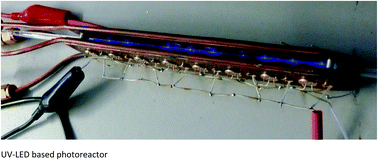Photo- and thermo-chemical vapor generation of mercury
Abstract
Photochemical vapor generation of both inorganic and methylmercury species can be achieved with equal efficiency when a sample reaction medium containing 2–10%

* Corresponding authors
a
Measurement Science and Standards, National Research Council Canada, 1200 Montreal Road, Ottawa, Canada
E-mail:
ralph.sturgeon@nrc-cnrc.gc.ca
Photochemical vapor generation of both inorganic and methylmercury species can be achieved with equal efficiency when a sample reaction medium containing 2–10%

 Please wait while we load your content...
Something went wrong. Try again?
Please wait while we load your content...
Something went wrong. Try again?
R. E. Sturgeon and V. Luong, J. Anal. At. Spectrom., 2013, 28, 1610 DOI: 10.1039/C3JA50152C
To request permission to reproduce material from this article, please go to the Copyright Clearance Center request page.
If you are an author contributing to an RSC publication, you do not need to request permission provided correct acknowledgement is given.
If you are the author of this article, you do not need to request permission to reproduce figures and diagrams provided correct acknowledgement is given. If you want to reproduce the whole article in a third-party publication (excluding your thesis/dissertation for which permission is not required) please go to the Copyright Clearance Center request page.
Read more about how to correctly acknowledge RSC content.
 Fetching data from CrossRef.
Fetching data from CrossRef.
This may take some time to load.
Loading related content
